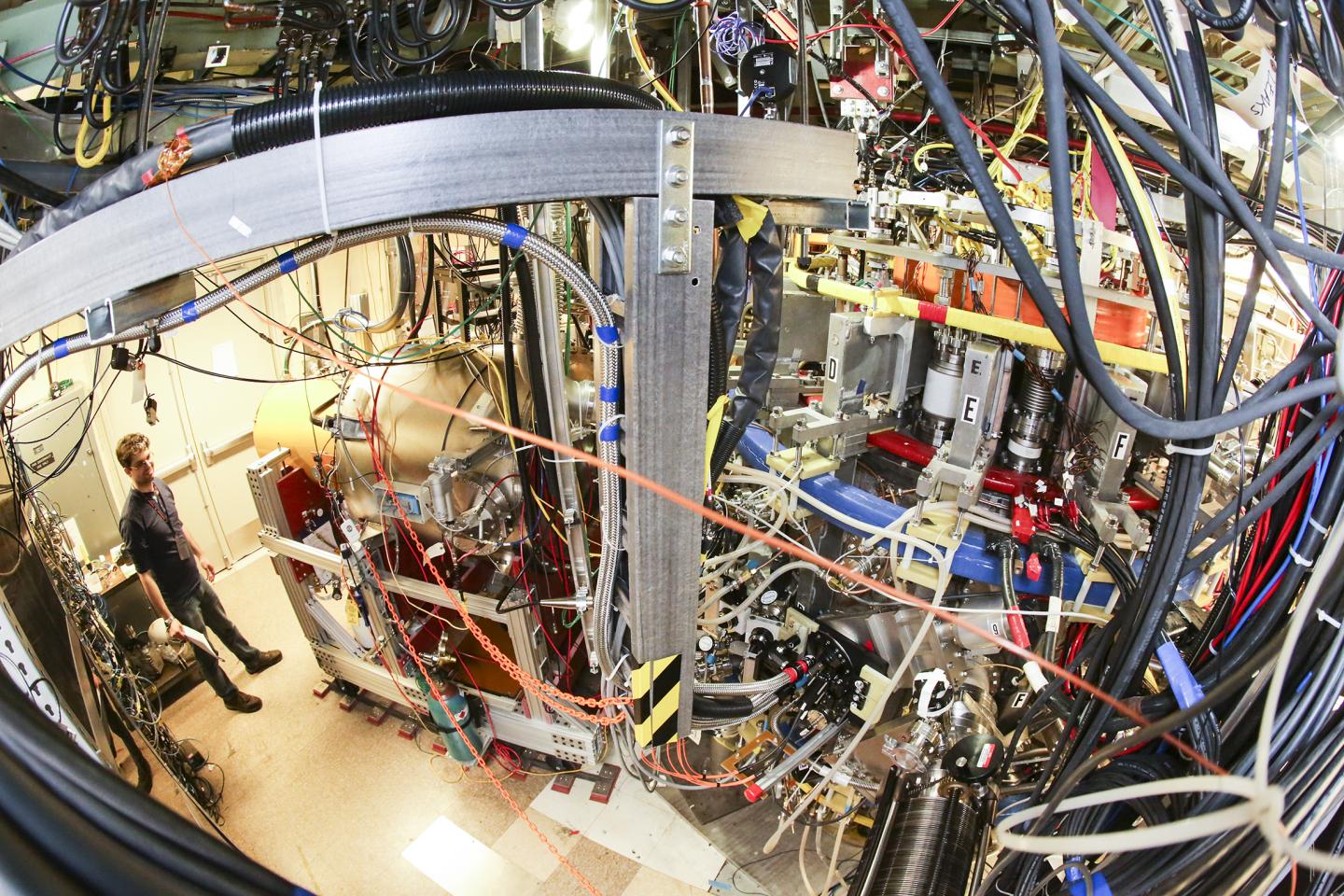
Credit: Elle Starkman/PPPL Office of Communications
Rajesh Maingi, a world-renowned expert on the physics of plasma, has been named to co-lead a national program to unify research on liquid metal components for future tokamaks, doughnut-shaped fusion facilities. Maingi, who heads research on boundary physics and plasma-facing components at the U.S. Department of Energy’s (DOE) Princeton Plasma Physics Laboratory (PPPL), will coordinate the three-year project in conjunction with Oak Ridge National Laboratory and the University of Illinois at Urbana-Champaign.
“It’s a pleasure to be offered the opportunity to do this,” said Maingi, whose current roles include serving as principal U.S. investigator for liquid lithium and impurity powder experiments on the Experimental Advanced Superconducting Tokamak (EAST) in China. “It will be a lot of work but liquid metal could prove essential for next-generation tokamaks.”
Fusion powers the sun and stars
Fusion, the power that drives the sun and stars, is the fusing of light elements in the form of plasma — the hot, charged state of matter composed of free electrons and atomic nuclei — that generates massive amounts of energy. Scientists are seeking to replicate fusion on Earth for a virtually inexhaustible supply of power to generate electricity.
The DOE-sponsored program will be funded at $1 million per year by the DOE Office of Science’s Fusion Energy Sciences program, with $325,000 per year for PPPL. The program aims to develop the strategy for a liquid metal plasma-facing component for a future fusion facility, such as a fusion nuclear science facility to test fusion components or a compact pilot power plant. The strategy will focus on coating a part called the divertor, which exhausts waste heat from a tokamak, with flowing liquid lithium — a silvery metal that the U.S. leads the world in developing as a plasma-facing component.
Such coating would protect the divertor from extreme heat and, under certain conditions, could largely prevent the recycling of material dislodged from the divertor back into the plasma, which would cause cooling down of the plasma. Flowing liquid lithium has also been shown to mitigate or even eliminate edge localized modes (ELMs), sudden bursts of heat that can damage a tokamak’s walls.
The process has already been under development at the recently upgraded Lithium Tokamak Experiment (LTX) — now known as the Lithium Tokamak Experiment-β — at PPPL, and has also been tested in a preliminary manner at the laboratory’s National Spherical Torus Experiment (NSTX).
Key technology and science issues
The nationwide program will examine key technology and science issues associated with the application of flowing liquid lithium to a tokamak divertor. Working with Maingi to coordinate the program will be Charles Kessel, a senior scientist at Oak Ridge National Laboratory, and Daniel Andruczyk, a research assistant professor at the University of Illinois. All three institutions will help to plan and organize technical work, national meetings, and reports. Also contributing will be the University of California, Los Angeles (UCLA), with other institutions brought in as appropriate.
The three-year goal will include:
- Computer modeling of engineering design and plasma interface concepts;
- Experiments to test the effect of liquid lithium on the wetting, corrosion and embrittlement of underlying substrates;
- Tests of the stability of flowing liquid metals in magnetic fields.
Longer-term goals beyond three years include the evaluation of other liquid metal plasma-facing components if studies identify difficult or insurmountable challenges with lithium, and a plan to build and test components in present-day tokamaks. “As we look forward to next-generation machines,” said Maingi, “the need for liquid metal only appears to be growing stronger.”
PPPL, on Princeton University’s Forrestal Campus in Plainsboro, N.J., is devoted to creating new knowledge about the physics of plasmas — ultra-hot, charged gases — and to developing practical solutions for the creation of fusion energy. The Laboratory is managed by the University for the U.S. Department of Energy’s Office of Science, which is the single largest supporter of basic research in the physical sciences in the United States and is working to address some of the most pressing challenges of our time. For more information, visit energy.gov/science.
###
Media Contact
John Greenwald
[email protected]
Original Source
https:/




